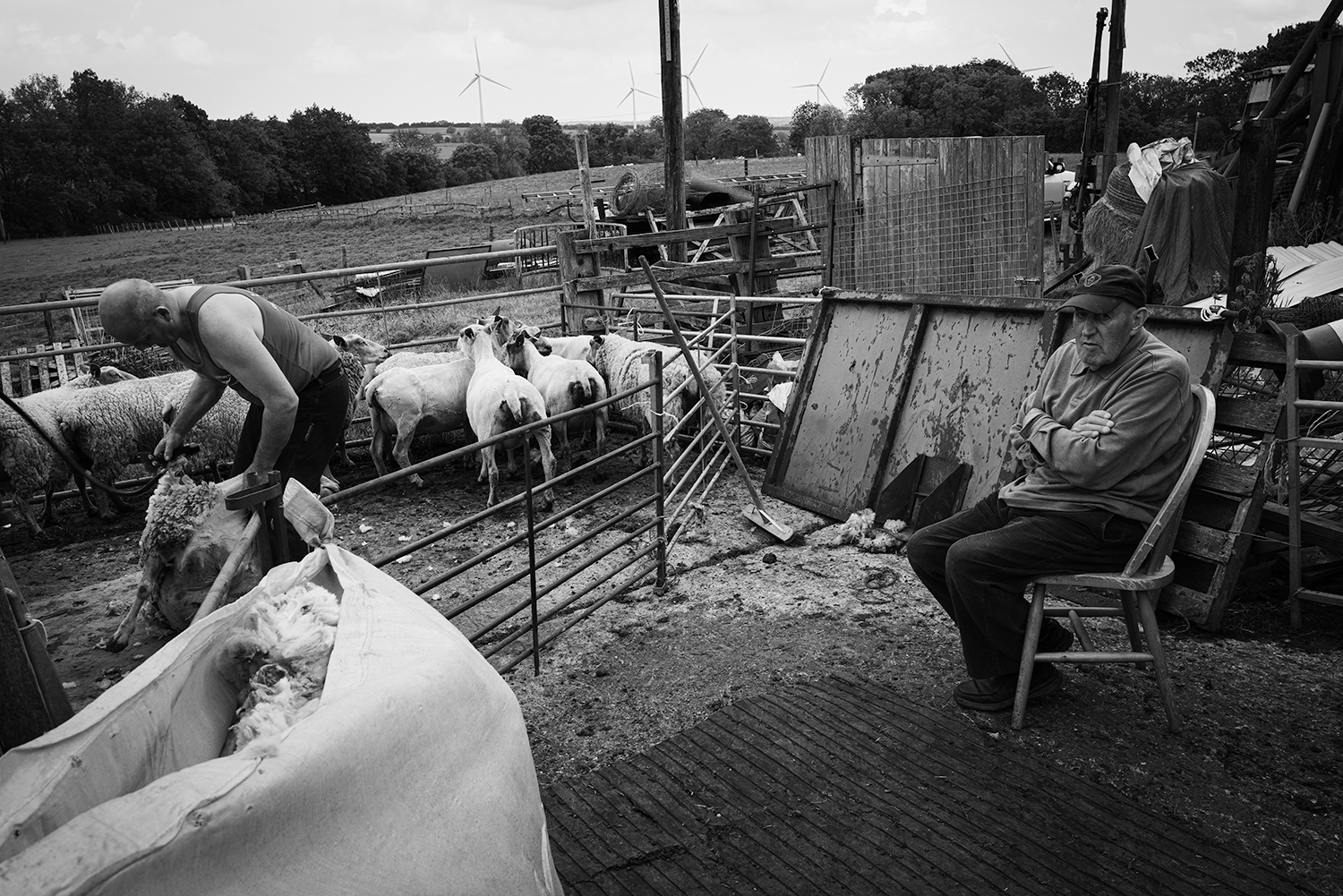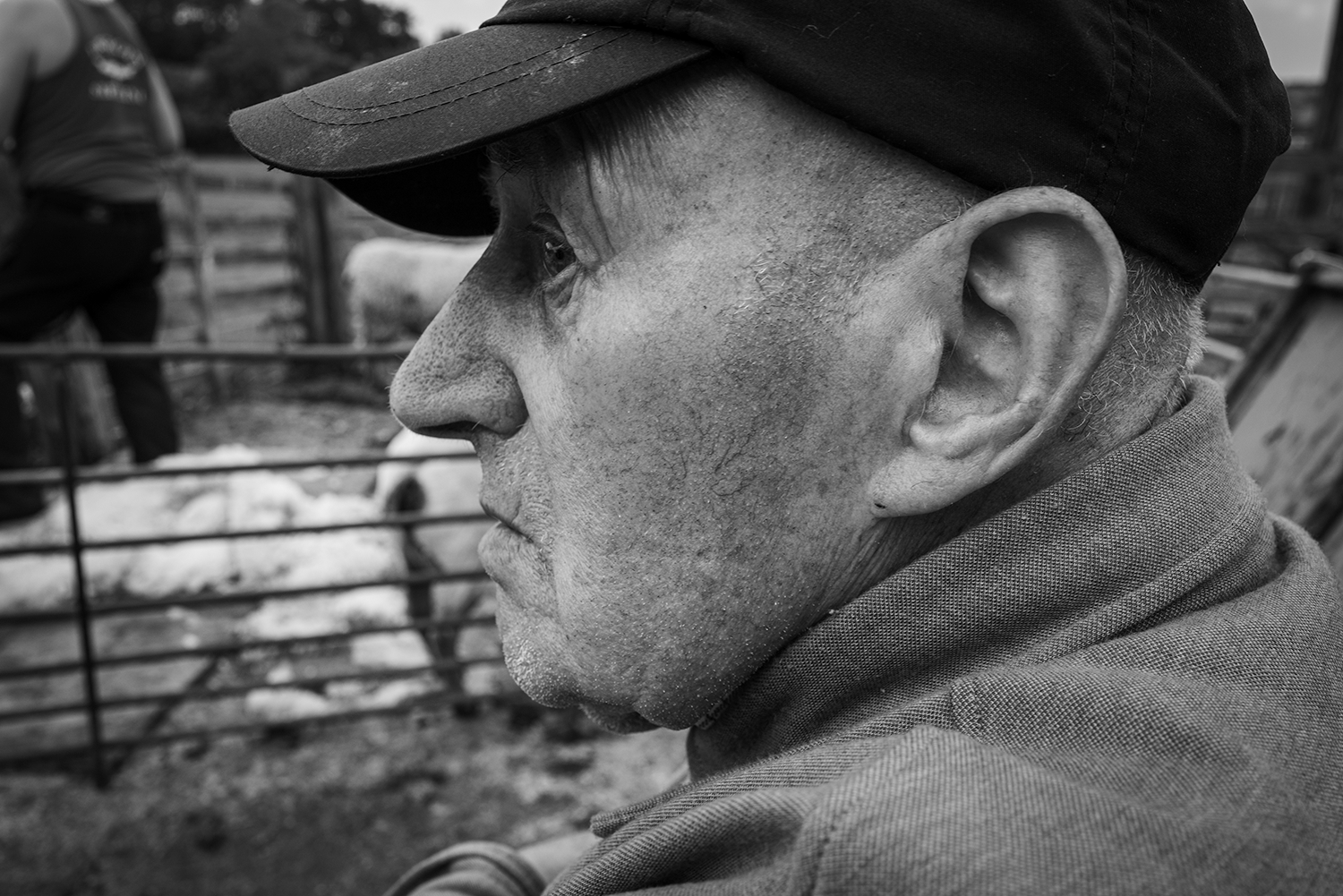The lambing season is behind us and we are in mid-summer. My resourceful and amenable neighbours have again allowed me to photograph more of the hard work that they put in to maintaining the health of the sheep that they keep on their smallholding.
I have learned from my neighbours that a characteristic of the Charollais sheep breed is that they should have a good quality fleece; dense but not too long or open. It should be complete over the body without breaks but not extending down the legs or over the head. Apparently, sheep didn't always need to be sheared; it is people that have bred domestic sheep to produce excess wool.
Historically, wool was an important fibre, which is renewable and compostable. These days sheep aren’t sheared only for financial reasons as the fleeces don’t have the same value, although wool prices have improved in recent years. Unfortunately, the beautiful, natural yarn has to compete with modern synthetic fibres and is now almost a luxury or niche product. It is likely that it would cost more to get a shearer to clip a small flock of sheep than you would get from the sale of the fleeces.
However, shearing must be carried out whether it is profitable or not. The practice is vital so that the ewes do not overheat in summer. Most sheep don't seem enjoy the shearing process itself, but it is necessary. Without shearing they would have greatly decreased mobility and be at a higher risk of becoming ‘rigged’ or stuck on their backs, making them vulnerable to predators. They will almost certainly also suffer with fly-strike and other parasitic infestation and disease.
It is best that the shearer is used to your breed, particularly if you have rare breeds. As a smallholder keeping just a few animals, it makes perfect sense to learn to do the job yourself, particularly when you consider that professional shearers will usually charge a minimum callout fee, which may push the cost of shearing a small flock beyond what is financially bearable. My friendly neighbours have many years of experience with their Charollais sheep and manage the whole process in house.
Thank you to Bob and Roger for always making me (and my camera) so welcome and for educating me in these matters.


















